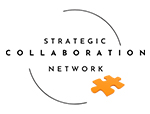Focus on one balance at a time.
Credit cards typically are one of the more expensive ways to finance spending, and if you’re keeping balances from month to month on several credit cards, you’re likely stuck in a loop of high-interest debt that limits your financial options and eats up valuable income.
To get off the debt hamster wheel, retire that credit card debt as soon as possible. Maybe you’re trying but getting nowhere—in which case, you may need to assess your current strategy.
There are wrong ways to tackle credit card debt
Research into how people try to pay down their credit card debt shows that most of us have trouble with being strategic about it. People may be daunted by doing anything but paying the minimum, or be inconsistent, or have no plan whatsoever.
Many people use the “sprinkle effect,” paying a little bit extra to each card from time to time without a clear plan. This method for tackling credit card debt probably won’t have much effect on your overall debt level, leading to discouragement.
The worst possible mistake when you have significant credit card balances is to pay only the monthly payment and then try to forget about it until next month. This is a surefire way to spend most of your life in high-interest debt.
Choose a strategy that works for you
Planning for a debt-free future is the best way to achieve one. There are two main strategies for paying off debt for people with more than one credit card balance:
- The snowball method: pay down the smallest balance first to achieve a sense of accomplishment, and then move on to the next-smallest and pay that off, etc., until you’ve paid off all your cards. This presumes that you are paying the minimum due on all the other cards as you go, and not adding any more spending to them.
- The avalanche method: pay down the card with the highest interest rate first, then move on to the next-highest interest card, and so on, until you’ve paid off all your cards. This also presumes that you are paying the minimum due on all the other cards as you go, and not adding any more spending to them.
If you choose the snowball method, advocated by money guru Dave Ramsey, you will probably end up paying more interest, but you’ll also probably feel more energized about your plan over time. This is the method that worked for the most people in a study conducted by the Kellogg School of Management—the study found that eliminating a balance predicted success in overall debt elimination, no matter what the original balance was.
If you choose the avalanche method, be aware that you’ll need to keep your determination strong if your highest rate is also on your biggest balance. This method is supported by research showing that paying off one balance at a time is a better strategy than paying extra to every card at once.
Stick to it and stay motivated
The key to both of these strategies is to make a real plan to get out of debt, and then stick to it.
Setting a date by which you’d like to be debt-free and then consciously working your strategy each month can help. You’ll need to assess the amount you owe, how much extra you are able to pay to eliminate it, and then use an online calculator or your own math skills to predict how long it will take to pay it all off.
Motivation is something you’ll have to work on as you go, so assess from the beginning what method will help you stay motivated, and if you feel your motivation flagging, ask yourself whether your strategy should change, or whether you need to mentally focus more on being proud of how much debt you’ve paid off rather than the total that’s left. Don’t lose sight of your end goal: more financial freedom.
And don’t forget that for anyone with large amounts of debt, there’s more to consider than simply the snowball versus avalanche—debt consolidation, refinancing, and changing your spending habits are all parts of a larger strategy to get your financial options free from the limitations of high debt levels.
Get tips from the pros
Signal holds free webinars on taking control of your credit, budgeting, and other topics to help members gain control of their finances and build a financially sound future. Consider attending one of our webinars to get more tips on how to build your money skills.
Visit the City Center branch on January 20 at 10am for Take Control of Your Credit, hosted by Senior Vice President of Consumer & Real Estate Lending Christopher Ercole. Refreshments will be served, and the event is open to the public.
Sources and further reading:
https://www.consumerreports.org/credit-cards/how-to-stay-ahead-credit-card-bills/
https://www.daveramsey.com/blog/how-the-debt-snowball-method-works






